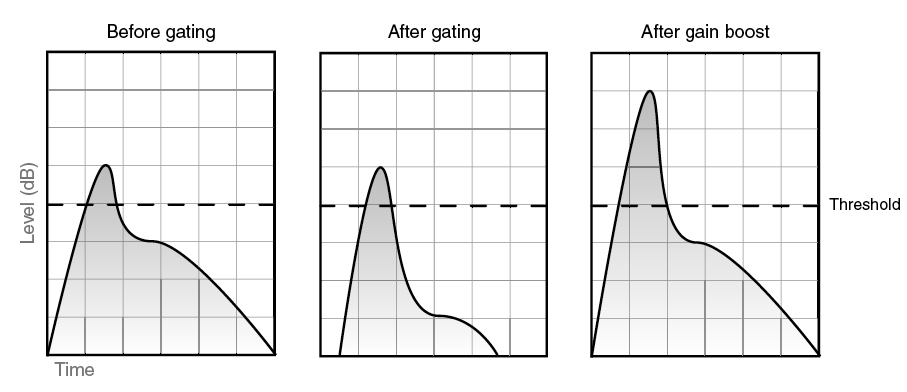
Removing spill
Much of today’s tracking is done in overdubs. Overdubs are less prone to spill, and mostly we deal with headphone leakage and the spill on the various drum tracks. Spill can bring about four main problems:
• Impair separation: Ideally we want each track to represent a single instrument or drum (room-mics and overheads are obvious exceptions). A snare track that also contains the hi-hats would make it hard to separate the two.
For example, such a hybrid track would restrict independent panning of each drum and in turn can cause a smeared stereo image to at least one of them.
• Combfiltering: The hi-hats on the snare track might not be phase-aligned with the hi-hats track or with the overheads.
When the snare is mixed with either track, combfiltering is likely to impair the timbre of the hi-hats and give it a hollow, metallic or phasing sound. Any instrument might suffer from loss of focus, impact or timbre coloration if its intended track is mixed with its own spill on another track.
• Add dirt: Whenever an instrument is not playing, a spill on its track can produce unwanted sounds. Floor toms are notable at producing rumble when the rest of the kit is played. Headphone spill might add unwanted noise during quiet sections.
• Interfere with processing: To give one example, a loud kick on a snare track might trigger compression and interfere with the snare compression. Brightening a tom track might also emphasize any hi-hats spill it includes.

This list suggests that spill should be removed whenever possible. It happens sometimes that after removing the spill, we find that bypassing the gate actually has a positive effect on the mix.
The various reasons for this are often unpredictable. Regardless, we must remove the spill first in order to learn whether its removal actually improves the mix. It is also worth remembering that processors added later in the mix, like compressors and equalizers, could also have an effect on this.
With this said, once the mix is in its final stages, it is worth trying to bypass spill gates, and see whether the mix changes for good or bad.
One of the main challenges with gating is keeping the timbre of the gated instrument. It was already mentioned that a lower threshold setting would help doing so. This task is made harder when the wanted signal and the spill are relatively close in levels, especially if they share the same frequency regions.
Snare and hi-hats, kick and toms are potentially problematic pairs, especially if spill was not considered during microphone selection and placement. We may employ any possible gate facility in order to improve our gating.
Side-chain equalization lets us attenuate the spill by attenuating its dominant frequencies, look-ahead lets us retain more of the natural attack, and hysteresis lets us keep more of the instruments’ natural decay. For extremely tricky gating tasks, it would be extremely beneficial to use at least one of these facilities, if not all of them.
One of the main challenges in gating is keeping the timbre of the instrument, mainly its natural attack and decay.
When gating drums, there is often a trade-off between the length of the natural decay and the amount of spill – the longer we retain the natural decay the more spill will escape gating. That spill is often made louder by a compressor succeeding the gate, and its instrument can become louder in the mix for short periods while the gate is open.
For example, the hi-hats spill on a snare track might make the hi-hats louder while the snare decays. One solution to this involves ducking the intended hi-hats track in an opposite fashion to the snare’s gating, so while the open gate adds some hi-hats spill, the actual hi-hats track is attenuated.
Another solution is decay reconstruction – the gate shortens much of the decay so no spill remains, and a reverb is employed to counterfeit the missing decay.
